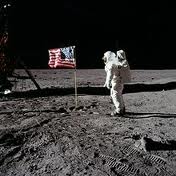A world rich in water - for some!
 When currently used and accessible water supplies are studied at a macro level, the conclusions might be:
When currently used and accessible water supplies are studied at a macro level, the conclusions might be:- Approximately 50% of the world (the blue and grey areas in the map) does not have a water problem,
- If I reside in one of these water-adequate areas, I should not have to worry about water shortages, and
- If I live in the red, orange and green areas, I could experience water scarcity e.g.if I live in the southwest region of the US, then I could experience water shortages unless I have a way to transport water from outside to where I live or I choose to live in the vicinity of the right water transportation infrastructure.
The devil is in the details
 |
| Source - NRDC |
- 412 counties (marked in red) spread all over the US will experience water supply shortages and some of them are in water rich areas like Florida.
- Only 30% (929 out of 3141) counties would be immune from water shortages in the future i.e. the vast majority of the US population will need to deal with water scarcity by 2050.
The water-immune are few in number!
 |
| Source - |
A map on global distribution of human population identifies that a very large percent of the global population will experience water shortage because of where they live.
In these areas, every city dweller knows that 24/7 supply of fresh water is unheard of today. Every city dweller also knows to plan their day around their need to stock up with water whenever it becomes available.
5.5 Billion people have experience with Water Shortage
 |
| 80% have experience with water shortages Image Source - atlas1. wikispaces.com |
Faced with freshwater shortage, their options range between:
- Adopting the resigned attitude that justifies using unsafe readily-available water, and
- Arranging their daily schedule around the gathering of necessary amounts of safe freshwater.
For these 5.5 billion, water is a personal local challenge.
- The remaining 20%, nearly 1.5 billion people, mostly have water for the taking whenever they so desire.












